How To Wire A Dual Voice Coil Subwoofer With 6 Different Wiring Diagrams
This article will answer how to wire a dual voice coil subwoofer with wiring demonstration.
This question is confusing, but it is actually quite simple! Wiring a dual voice coil subwoofer is not something complicated as think nor you ‘ll need any electrician for; anyone with some basic knowledge of how speakers work can complete the task in under a few minutes.
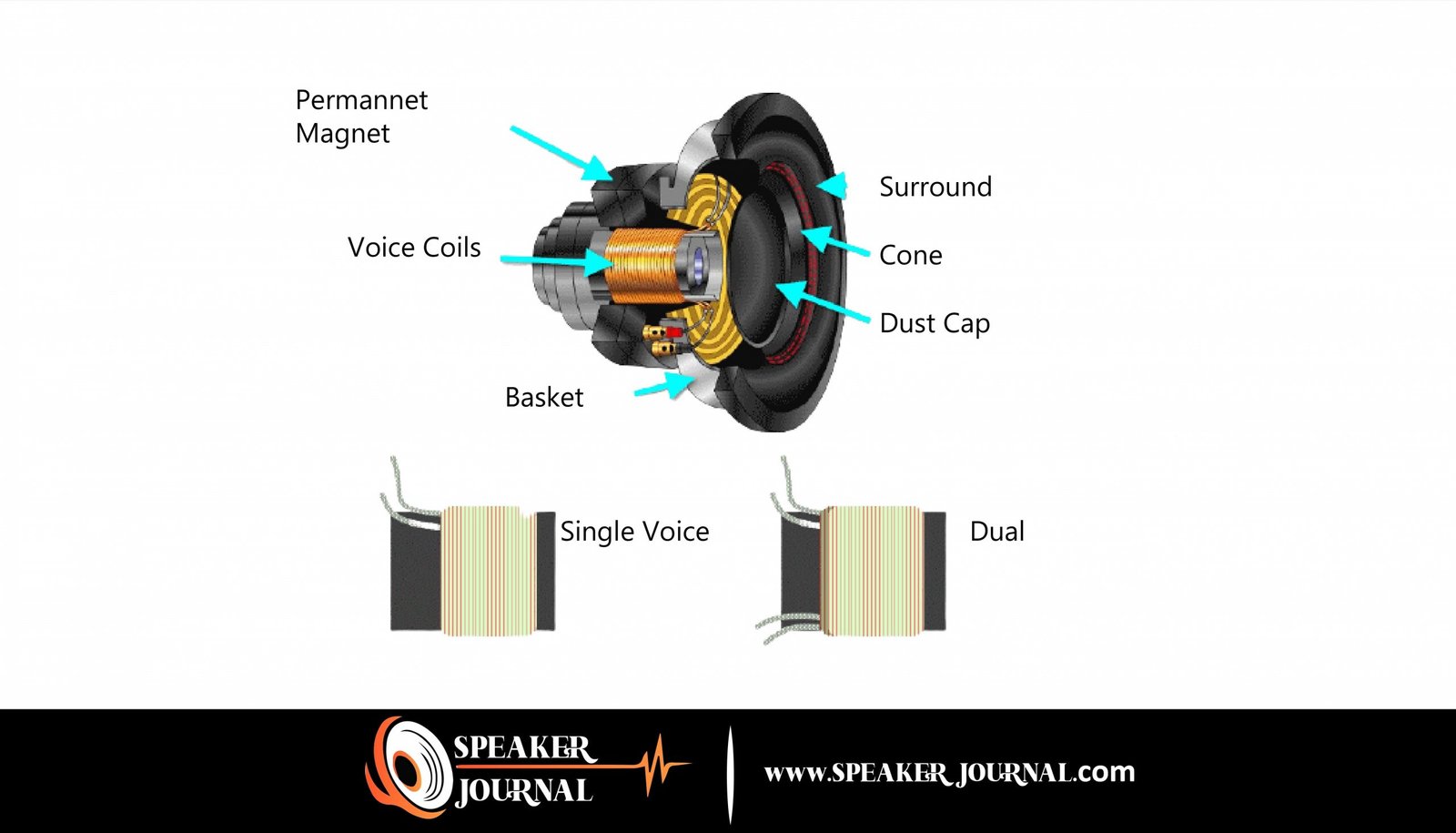
A dual voice coil subwoofer is a speaker with two separate coils of wire wrapped around the same magnet. A typical single-voice coil sub will have just one metal core attached to the cone, while this type has an additional ring that can hold another set of wires.
This means you need four terminals because there are three different parts: the positive and negative for the first coil, as well as a separate set of positive and negatives just for the other.

There are two main ways you can wire up your subwoofer: series or parallel.
Serial wiring means all four terminals will be connected to one another, so they work as one; parallel wiring has the positive of coil A and B connected to their own individual terminal on your amp. The negative side will be shared between them both, though still going through a single channel.
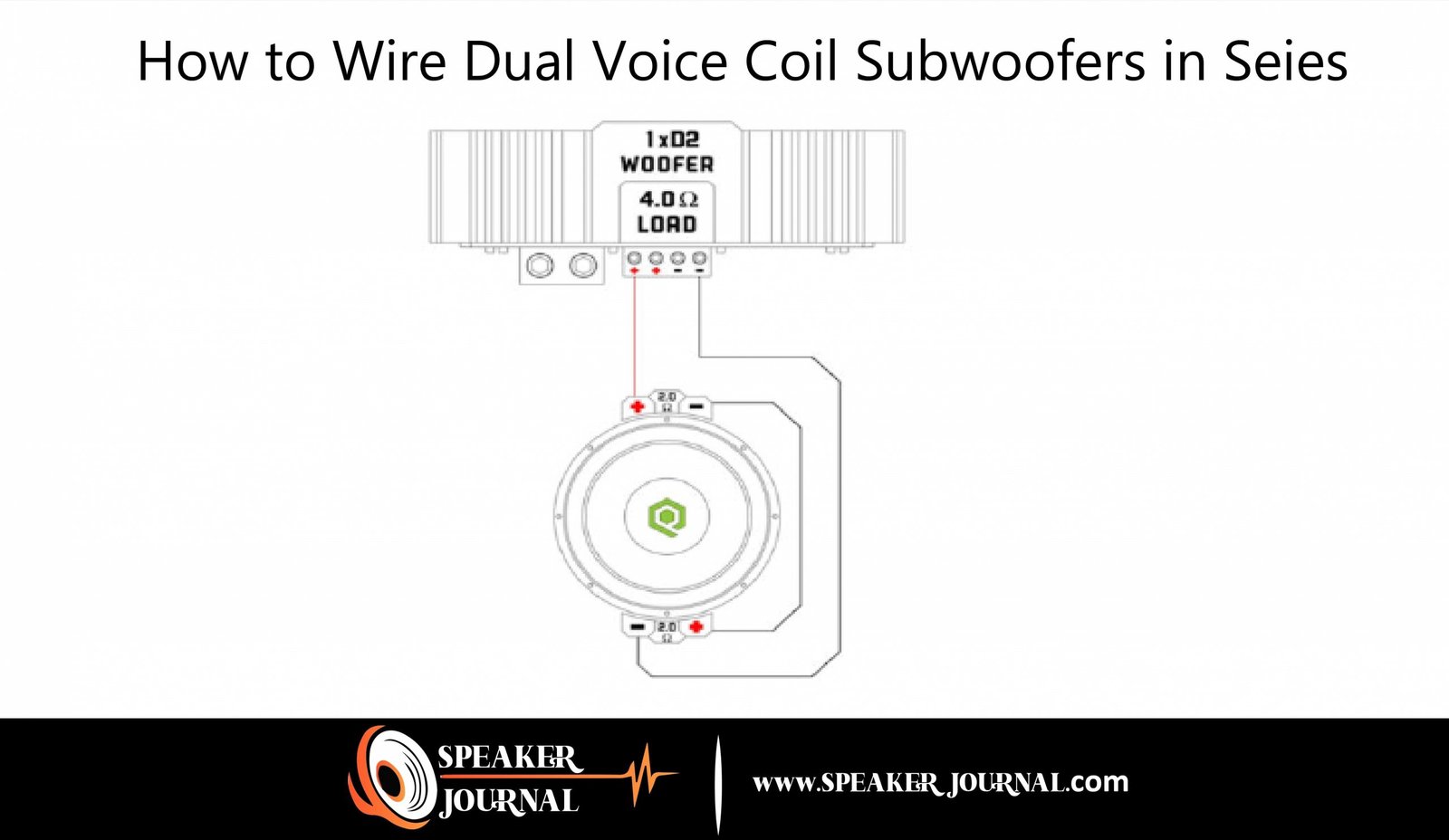
All you need to do is connect the first set of positive and negative terminals to one another, then repeat this for the second pair of coils.
Series wiring gives you higher impedance compared to parallel, which will reduce your overall wattage on each channel because it splits the power between coil A and B.

All you need to do is connect the positive terminal of coil A to a separate channel on your amplifier and repeat this for B.
The negative will be wired together just like in series wiring. Parallel wiring means you have half the impedance compared with serial, so it allows more power from your amp into each side which gives you a slightly higher output overall.
Even though wiring a dual voice coil subwoofer is simple, you should understand the difference between series and parallel.
If you are looking to save on your power bill, then serial wiring will be best for you because it only uses one channel with half the overall wattage capacity of its counterpart.
However, if sound quality is what matters most to you, or your amplifier can give you more power in each channel, then parallel will be the best option.

Dual voice coil subwoofers are more efficient than single voice coil subs because the coils themselves don’t need to be as thick, which means more movement and better bass.
If there are four terminals on the speaker, one for each coil and a negative terminal, it is most likely to be a dual voice coil.
If there are three terminals: positive and negative for both coils, then it’s a single voice coil.
Dual voice coil speakers are more efficient because the speaker cone has to move less distance for a wider frequency range. The magnets in dual voice coils are also stronger than in a single voice coil.
There are performance differences between dual and single voice coils mainly due to efficiency, magnet strength, power handling, and frequency range.
Dual voice coils are more efficient, have stronger magnets, and can handle higher power levels due to the separate sets of wire for each.


Nowadays, most car amplifiers are rated for power output (in Watts) at specific speaker loads. Power ratings for mono amplifiers may be as follows:
With dual voice coil subwoofers, you can get more power from the amplifier by connecting the speakers in parallel.
Get more from your amplifier!
The speakers can be wired in parallel, which gives you higher power output.
In order to wire a dual voice coil subwoofer in parallel, you need a minimum of four wires going to the speaker terminals.
The additional power from your amplifier is divided by the total number of speakers in parallel.
For example, if you have two dual voice coil subwoofers wired in parallel to an amplifier, each subwoofer will receive half of the total power.
While it is possible to add a second 2-ohm subwoofer and wire both in parallel, the cost would be higher, the installation space more limited, and so on.
To allow the amp to output its full power, a 2 ohm DVC subwoofer could be used and wired in parallel. You won’t be able to reach the power capacity of your amplifier otherwise.
Today’s class D amplifiers can handle 1 ohm and have ratings like this.
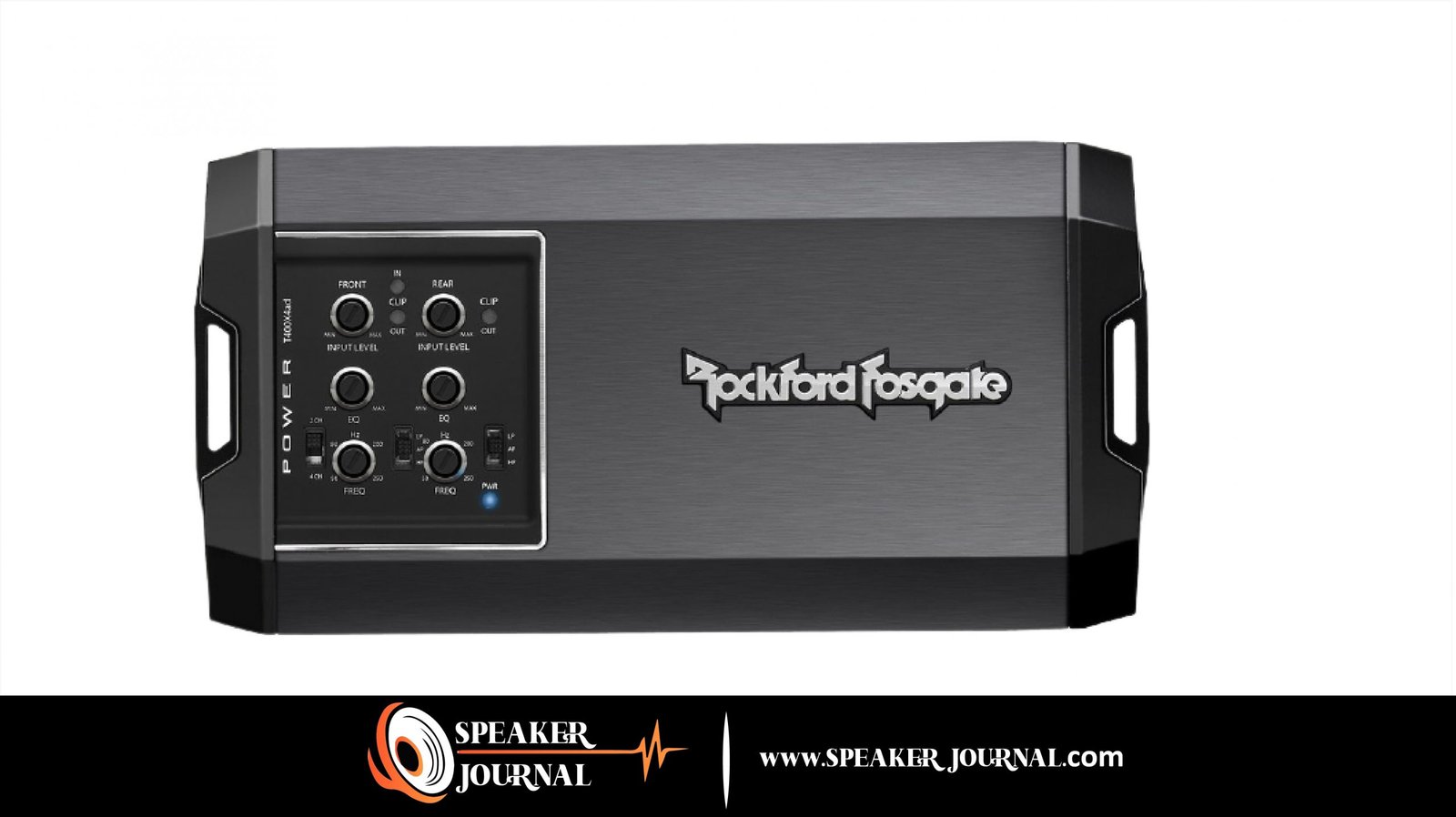
If you have an amplifier with more than one channel (like a 4, 5 or 6-channel), then it’s possible to wire all the woofers in series for maximum power.
You want to add a subwoofer, but you don’t want to buy a second amplifier. How do you accomplish this?
Using a dual voice coil subwoofer, you can drive the subwoofer with enough power by using one channel for each voice coil. If you have a very powerful system, one amp can be put on each voice coil for a single subwoofer or multiple subwoofers.

In most cases, you can’t wire multiple subwoofers together and expect them to perform as one.
If the impedance of each subwoofer is different, they can’t be wired together without causing damage to the amplifiers.
When two speakers of two different impedances are wired in parallel, the total impedance is the same as one speaker with double the ohms.
The impedances add together to create a new impedance.
For example, two speakers with an impedance of eight ohms wired in parallel have a total impedance of four ohms.
If you have two subwoofers with different impedances, the lower impedance should be connected to the amplifier.
For example, if one subwoofer has an impedance of four ohms and the other is two ohms.
The speaker with a lower impedance should be connected to the amplifier.
In this case, connect the 4-ohm speaker to one channel of your amp and wire that channel in parallel with the 2-ohm subwoofer.
If you connect both speakers to one channel of your amp, they will be wired in parallel.

Typically, 8-ohm subwoofers cannot be used efficiently for car audio since they cannot produce the same power as a 4-ohm speaker of the same type.
Because they’re below the minimum amp specification, car subwoofers with 2 or 4-ohm ratings cannot be used with home stereo amplifiers.
They can cause an amp to overheat, shut down, and even become permanently damaged.
You could use dual voice coil speakers for both home and car use with a dual 4-ohm subwoofer:
Particularly nice is getting a great deal on speakers, as they are able to be used when otherwise you wouldn’t be able to.
Dual voice coil subwoofers generally come in four different types of impedance ratings.
This includes 2 or 4 ohms and 8 ohms.

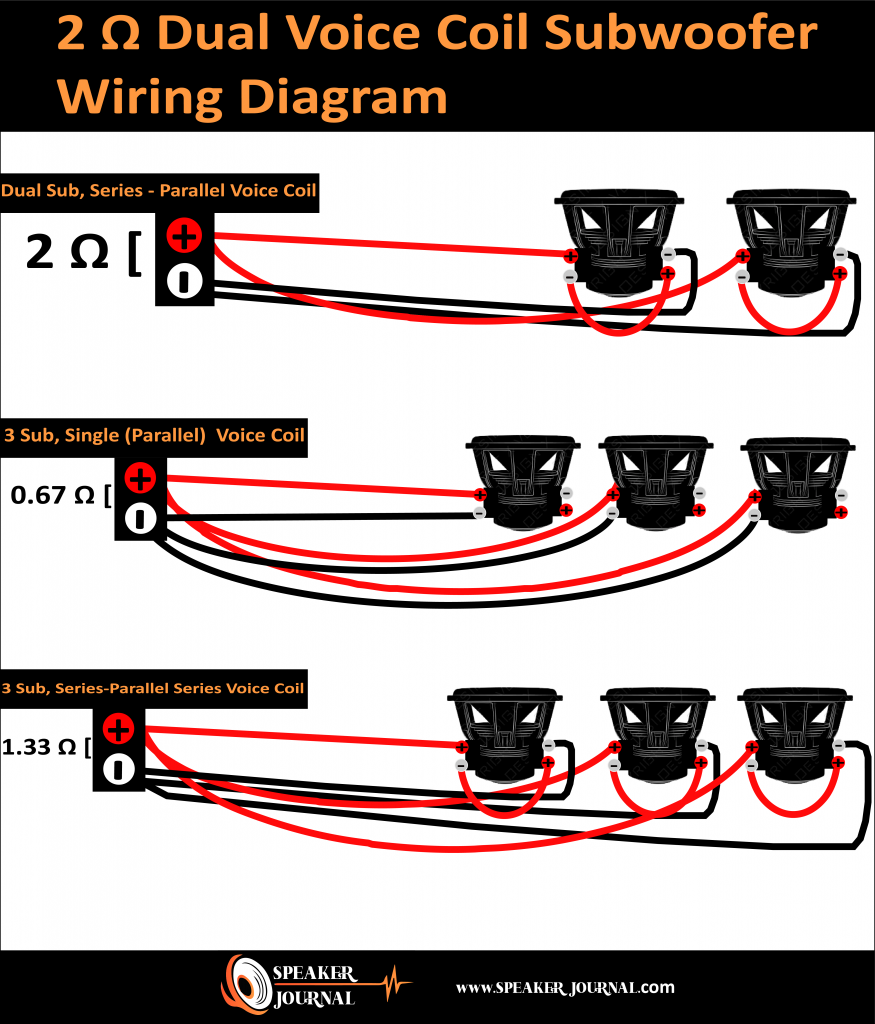

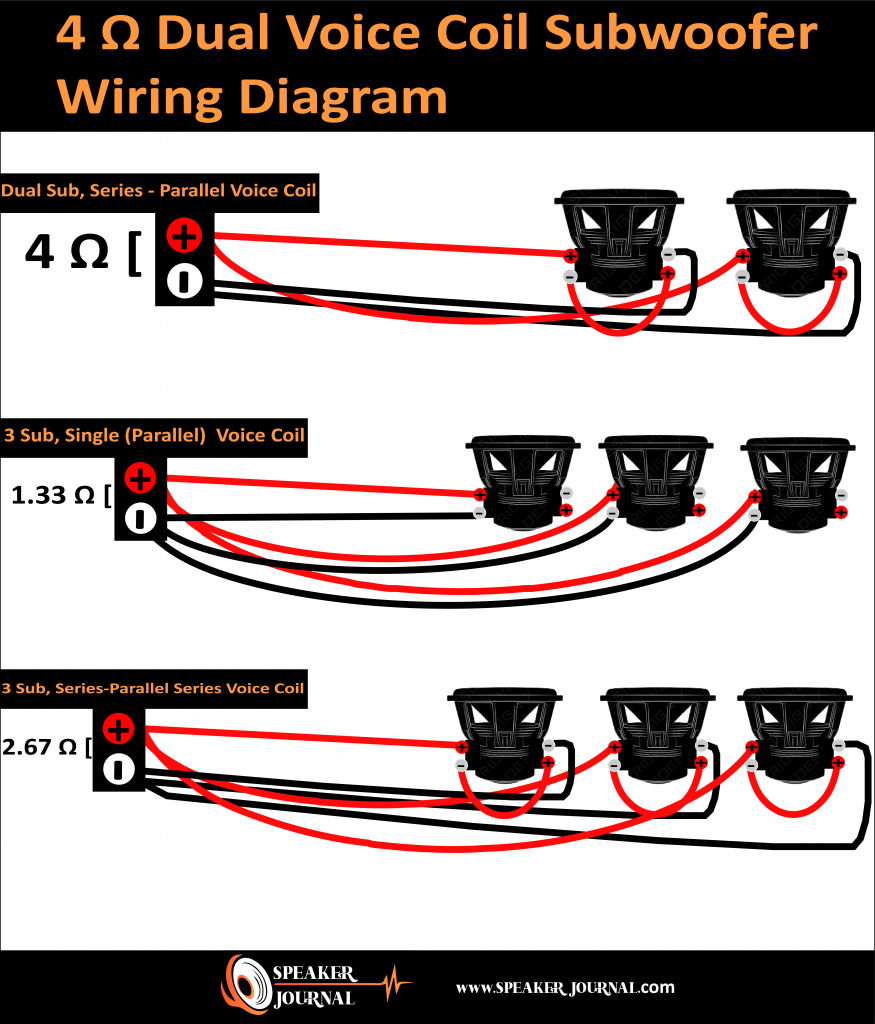


To wire a dual voice coil subwoofer in parallel, you need a minimum of four wires going to the speaker terminals. The additional power from your amplifier is divided by the total number of speakers in parallel.
For example, if you have two dual voice coil subwoofers wired in parallel to an amplifier, each subwoofer will receive half of the total power.
If 2 or 4-ohm subwoofers are available, you can wire them together and connect each one to a separate channel of the amplifier. The main thing to keep in mind is that the impedance needs to match.
If one subwoofer has an impedance of four ohms and the other is two ohms, the speaker with a lower impedance should be connected to one channel of your amp.
While it’s possible to bridge a dual voice coil subwoofer, the impedance of each channel will generally be half that of a single voice coil subwoofer. If one voice coil is two ohms and the other is four, then each channel will be a single ohm.
This type of wiring isn’t ideal for a dual voice coil subwoofer.
COPYRIGHT © 2021 · SPEAKERJOURNAL.COM, ALL RIGHTS RESERVED. WE ARE A PART OF THE AMAZON AFFILIATE PROGRAM. IF YOU BUY SOMETHING WITH OUR LINK WE GET A SMALL AMOUNT FROM AMAZON WITHOUT CHARGING YOU ANY ADDITIONAL AMOUNT. HOWEVER, WE DO UNBIASED REVIEWS. WE DISCUSS BOTH THE PROS AND CONS OF PRODUCTS SO THAT YOU CAN DECIDE WHETHER TO BUY OR NOT.
